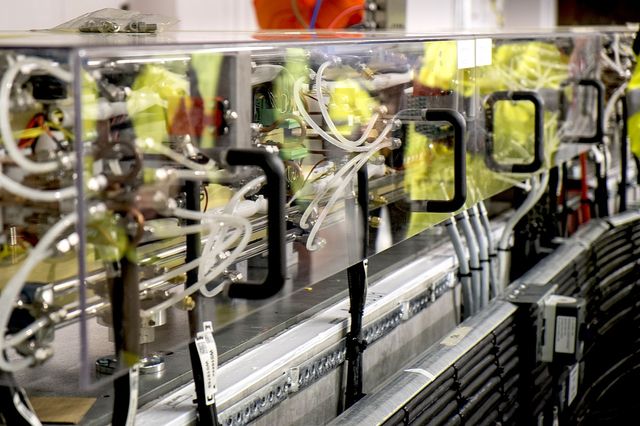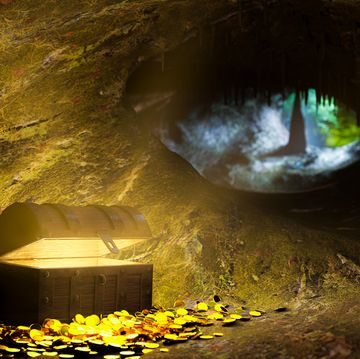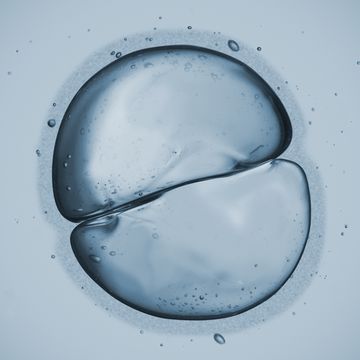- Estonian researchers have published their first paper from studies at the MAX IV synchrotron.
- Sweden’s nationally funded MAX IV complex has boosted regional research and increased access to cutting-edge technology.
- Synchrotron radiation is used for applications like trying to make liquid hydrogen here on Earth.
Scientists in Estonia and Finland have published the first research from their new facility within Sweden’s famous MAX IV x-ray laboratory. In their new paper, they share tests on ionic liquids—think electrolytes on steroids—that were made possible by MAX IV’s brightest-in-the-world synchrotron beams. The extremely bright light is cutting edge and approaches the speed of light, which shortens experiment duration and increases the fidelity of data and measurements.
A synchrotron is a kind of particle accelerator that uses the power of magnets (pictured above) to bend extremely bright beams in a circle. Where a cyclotron lets radiation bend further and further outward in a spiral, a synchrotron keeps the beam synced together in the same circular path, and each magnet bounces an individual beam off into a beamline. Brightness and speed accumulate together as electrons are pressed into traveling the circular path over and over. It’s easier to approach the speed of light when you have what feels like an infinite runway.
Synchrotron facilities like the one at MAX IV are also rare. There are only a handful of such facilities in the world. All are funded by governments or even by multiple governments in scientific coalitions. The newest planned synchrotron facility, Sirius, will be in Brazil. Sirius’s website presents synchrotron-enabled atomic and molecular studies as the future not just of science but of consumer and world health.
MAX IV is a synchrotron radiation facility within Sweden’s national laboratory, MAX-lab, where it’s the fourth successive synchrotron (MAX-I, II, and III) and by far the most powerful. The facility offers research space and time to a huge variety of projects, because radiation touches almost every kind of science in the 21st century.
The Finnish-Estonian beamline, which is the term for the kinds of focused x-rays that teams at MAX IV are able to experiment with, opened in late 2018 after MAX IV’s first international collaboration. The technology that enables the beam is similar to other particle accelerators like at Fermilab, or the proton beam treatment for certain kinds of cancer.
The University of Tartu-sponsored research team studies ionic liquids, which are salts that stay liquid at or just above room temperature. Because of their chemical properties—salts are conductive and liquids are flexible and easy to work with—ionic liquids have strong potential in the field of supercapacitors. Some ionic liquids perform better than electrolytes in the same capacitor setup, but scientists don’t understand why that is.
Electrolytes enable transmission of electrical pulses within the human body and also make up the bulk of capacitors used in electrical applications. Electrolytes decompose (or separate) easily, but ionic liquids are much less understood, and they occur naturally in liquid form. To study the electronic makeup of ionic liquids, the Tartu researchers used their beamline to vaporize different ionic liquids and examine the results using their own metrics.
Thanks to the beamline's "intense photon flux," says Vambola Kisand, the head of the laboratory of x-ray spectroscopy at the UT Institute of Physics, the studies were "conducted with extremely good spectral resolution and short data acquisition times."
Sounds like Max IV has a very, very bright future ahead.

Caroline Delbert is a writer, avid reader, and contributing editor at Pop Mech. She's also an enthusiast of just about everything. Her favorite topics include nuclear energy, cosmology, math of everyday things, and the philosophy of it all.












